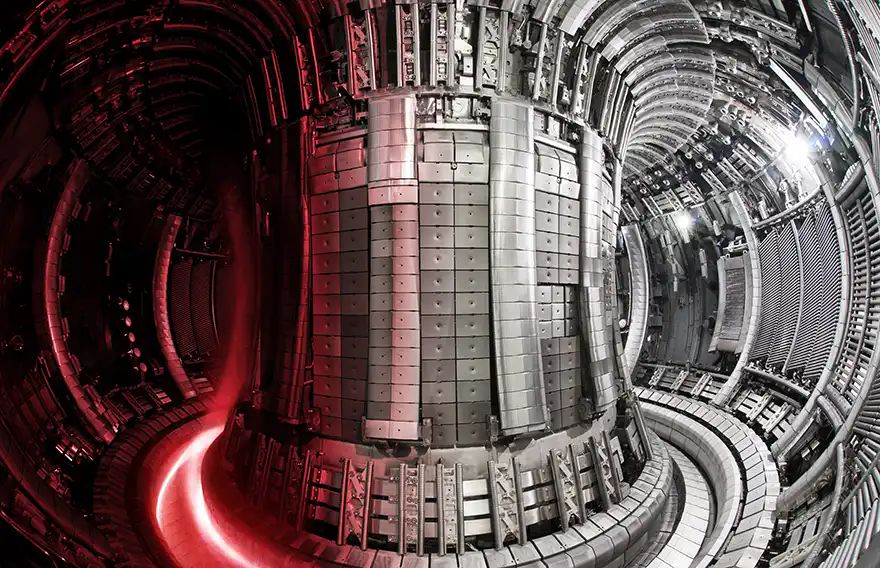 JET interior with superimposed plasma. Photo: UKAEAKingsbury
JET interior with superimposed plasma. Photo: UKAEAKingsbury and
Additure has announced that they have been appointed to provide additive manufacturing (AM) technology to the
UK Atomic Energy Authority (UKAEA), which is conducting vital fusion energy research. UKAEA is the UK’s national fusion energy research organisation and is an executive, non-departmental public body sponsored by the Department for Energy Security and Net Zero.
This research aims to deliver sustainable fusion energy that maximises the scientific and economic benefits for the UK economy. A crucial part of UKAEA’s work is building industrial fusion capability by informing and educating manufacturers and supply chains about the technologies that will be required for fusion energy to be deployed at scale.
As part of their research, UKAEA has been experimenting with Additive Manufacturing (Metal AM) to produce components with the required durability to withstand the intense environment within a fusion energy machine.
UKAEA is looking to utilise AM for a novel application — developing tungsten material and layering this with other materials such as copper. UKAEA has appointed Kingsbury and Additure to install a Nikon SLM Solutions SLM®280 2.0 Laser Powder Bed Fusion (LPBF) machine.
Roy Marshall, head of operations for fabrication, installation and maintenance at the UKAEA, said: “Kingsbury and Additure offered their support in working with UKAEA to develop additive manufacturing as a manufacturing technology for complex geometry fusion components.”
Support UK industryHe continued: “The UKAEA aims to develop the commercialisation of additive manufacturing and support UK industry in the transition into the fusion energy sector. We conduct the complex areas of research and development to the point where it becomes commercially viable, the advice and support of our supply chain is hugely valuable in expediting this process.”
Will Priest, business development manager at Additure, was delighted to be part of the initiative, and provide the UKAEA with a cutting-edge LPBF solution. He said: “We are excited to support the team at the UKAEA as they scale, not just with the SLM®280’s LPBF capability, but with all the key elements of the AM ecosystem to make this a robust manufacturing solution for UKAEA and the UK’s fusion programme.”
The SLM®280 2.0 can support refractory metal development through production. It achieves additive component build rates up to 80% faster compared to single-laser configurations and, thanks to a PSM powder sieve for depowering and system cooling, ensures operator safety.
To further assist the UKAEA’s ambitious efforts, Additure provided extensive training to the research, material, and design teams. This includes definitive application training on build set-up, optimisation, and use of specific machine features, like the heated reduced build volume for small-volume manufacture of powder lots for quick development cycles. This deeper level of technical knowledge will prove invaluable, and will complement UKAEA’s existing expertise.
Mr Marshall concluded: “The applications training from Additure will provide our engineers with new ways to design some of the complex structures required by fusion and allow them to do this using some of the most challenging materials to work with.
“For AM to contribute to fusion energy, more designers need to think, ‘what process is most suitable for the desired thermal or structural performance?’ and ‘how do I create a design that is best optimised for AM?’”